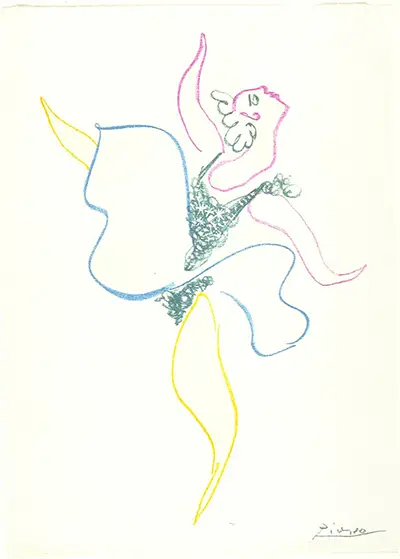Moving away from the limited colours of many of Picasso’s other line drawings, Dancer 1954 owes its energy and vibrancy from the variety of colour, each used to represent different parts of the dancer’s body and physique and including the purple leotard that was typical attire for ballet dancers of that era. The gentle, wavy lines of Dancer 1954 and its vivid colours have been likened to Fauvism, which is the style of les Fauves, meaning ‘the wild beasts’ in French, a movement led by André Derain and Henri Matisse at the beginning of the 20th Century. Their work embodied the emblematic themes of Impressionism and, although the movement only lasted a few years and only produced three exhibitions, the work they produced has had a lasting effect upon the art world and significant artists such as Picasso.
As a talented draughtsman, Picasso often used sketches as a conduit to discovery and to engage his art with past masters. The result was the development and creation of his inimitable style and the production of powerful and moving pieces such as Dancer 1954. Some of Picasso’s other line drawings are far more intricate than Dancer 1954 but the simplicity of this piece forces the eye to absorb the grace of the dancer’s movement. She is caught in a typical ballet pose but the inference is that this is simply a moment caught for posterity and that the dance will continue for an audience as absorbed as we are by this work of art. Instead of being captured by an entire ballet, however, those who look upon this work are captivated by the moment, the ballet and the dancer.

